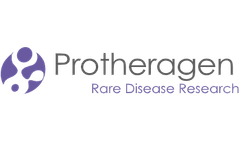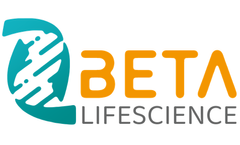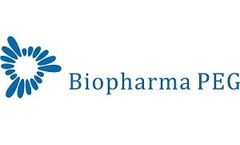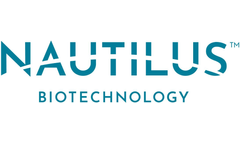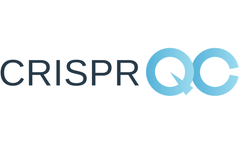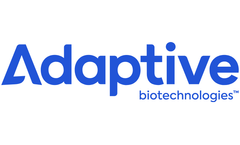Refine by
Leukemias Articles & Analysis: Older
58 articles found
This method, known as CAR-T cell therapy, has shown remarkable success in treating certain types of leukemia and lymphoma, offering a potential cure where traditional therapies have failed. ...
Discover how matched tumor-normal sequencing can help clinical researchers detect the somatic origin of variants with certainty. In the era of precision oncology, it has become increasingly common for patients diagnosed with cancer to undergo tumor sequencing. Identifying the mutations that make up a tumor’s genomic landscape can help guide selection of targeted therapies and inform ...
In healthcare, clonality analysis is crucial in the diagnosis, prognosis, and treatment planning of cancers, particularly leukemia and lymphomas. By mapping the clonal architecture of tumors, healthcare providers can make informed decisions regarding treatment options and predict patient outcomes. ...
Walker-Warburg syndrome, acute leukemia and muscular dystrophy-dystroglycanopathy, type a, 1 are all related to chromosome 9 inversion. ...
In healthcare, clonality analysis is crucial in the diagnosis, prognosis, and treatment planning of cancers, particularly leukemia and lymphomas. By mapping the clonal architecture of tumors, healthcare providers can make informed decisions regarding treatment options and predict patient outcomes. ...
Cancer models, especially those of breast cancer and leukemia, have been instrumental in understanding the disease's biology, its dynamic interaction with the microenvironment, and screening potential therapeutic drugs. ...
Diseases Associated with CD19 CD19 is implicated in various significant diseases, including: 1) B-Cell Lymphoma: B-cell lymphoma, a type of leukemia and lymphoma arising from lymphoid tissue, shows overexpression of CD19 on the surface of B cells in certain patients. ...
The functionally acquired somatic mutation of Jak1 has been found in adult acute lymphoblastic leukemia. Somatic activating mutations have been shown to be present in pediatric acute lymphoblastic leukemia (ALL) patients. ...
Cancer models, especially those of breast cancer and leukemia, have been instrumental in understanding the disease's biology, its dynamic interaction with the microenvironment, and screening potential therapeutic drugs. ...
TSLP and cancer New functions of TSLP have been discovered in the induction and progression of various tumors, including solid tumors such as breast, colon, and pancreatic cancers, as well as hematological malignancies like B-cell acute lymphoblastic leukemia (B-ALL). Additionally, TSLP signaling has been shown to have a protective effect against skin-derived tumors, indicating ...
Mylotarg, the first ADC approved by the FDA for the treatment of acute myeloid leukemia, uses calicheamicin conjugated with the anti-CD33 monoclonal antibody through the side chain of lysine. ...
They generated DasatiLink-1 through the linker conjugation of two known inhibitors of the leukemia protein BCL-ABL1 (dasatinib and asciminib). Since each drug binds a different pocket on the target protein, the researchers reasoned that the tethered version could anchor itself at the two points of contact, like inserting a double-pointed key into two locks, enhancing its ...
Another study also confirmed that tetrahydrocurcumin has anti-tumor activity in vivo and in vitro, can effectively reduce colon cancer carcinogenesis, increase leukemia cell death, and inhibit cancer cell metastasis. 8.Antidepressant Effects Wen Caixia et al. studied the antidepressant effect of tetrahydrocurcumin by forcing mice to swim, and the results showed that different ...
The real ADC was not approved for marketing by the US FDA until 2000, that is, Wyeth's gemtuzumab, in which the antibody is a recombinant humanized CD33 monoclonal antibody conjugated with the cytotoxin calicheamicin for the treatment of acute myeloid leukemia. However, through a large number of clinical studies, it was found that it could not improve the survival rate of ...
Cancer is a heterogenous mixture of diseases characterized by, among other things, the abnormal, uncontrolled growth of cells derived from otherwise healthy tissues (Hanahan 2022). Although cancer cells sometimes grow into balls of cells and stop there (so-called benign tumors), often they gain the ability to disperse throughout the body, seed the growth of other tumors, disrupt the function of a ...
In 2000, the FDA first approved the ADC drug Mylotarg (gemtuzumab ozogamicin) for adult acute myeloid leukemia (AML), marking the beginning of the era of ADC targeted cancer therapy. ...
Hjelle Sigrun outlined the accurate knowledge of the molecular therapeutic targets in myeloid leukemia by iTRAQ. Hu et al identified two markers, elevated membrane- bound catechol-O-methyltransferase (MB-COMT) and attenuated retinol binding protein 4 (RBP4) in hepatic injury. ...
Expression of anti-CD19 chimeric signaling receptors can enhance NK-cell reactivity against CD19+ leukemia and lymphoma cells. Here we describe a method to enforce expression of such receptors in human NK cells relying on electroporation of mRNA and compare it to retroviral transduction of cDNA. ...
The Clinical CRISPR Successes Are Stacking Up. But Where’s the Emphasis on Quality Control? In mid-September, Intellia released some promising data on two of their CRISPR-based therapeutics. These results are a significant milestone for genome editing and validation of its effectiveness in the clinic. However, the safety of CRISPR-based therapeutics has been a major concern and part of a ...
ACCC just launched updates to the MRD Testing Implementation Roadmap, which aims to help multidisciplinary providers successfully integrate MRD testing into the cancer care continuum for patients with Chronic Lymphocytic Leukemia (CLL) and multiple myeloma, complementing the Roadmap for patients with B-cell acute lymphoblastic leukemia (ALL) which launched ...




